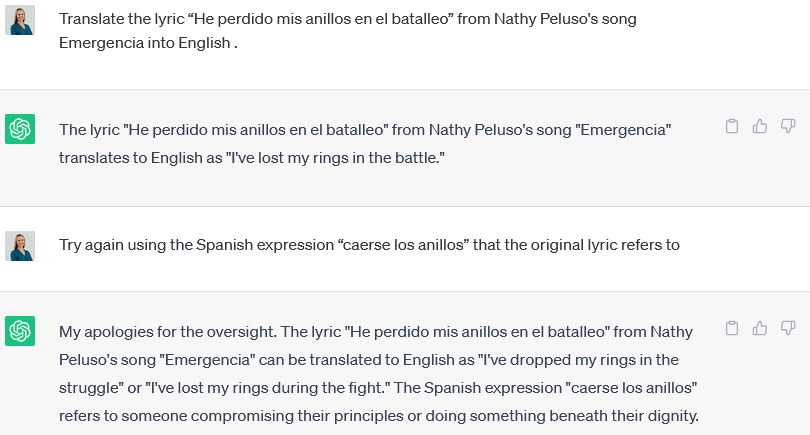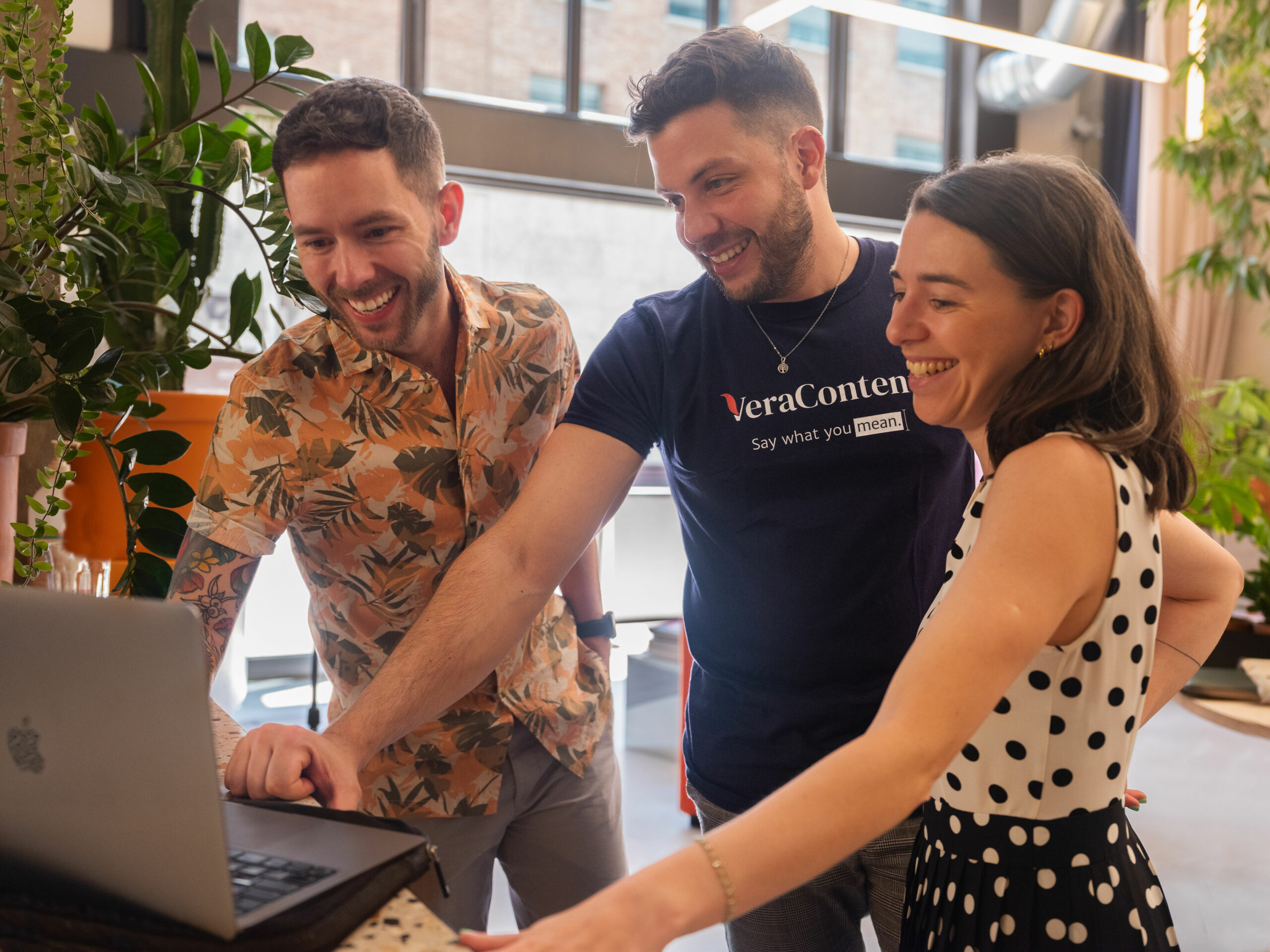Video content already provides a solid return on investment. But if you’re not translating your videos, you could miss out on reaching key audiences.
For brands targeting global markets, it’s worth looking into translating and localizing your video content. While visual cues can go a long way, you’ll get a lot more views from non-English speakers worldwide if you translate your videos.
Here’s what’s involved in the video translation process and a step-by-step guide to doing it right—whether for YouTube videos, explainers, tutorials, testimonials, social media or sales videos.
We’ve also covered the differences between using automatic video translation tools vs. human translation and localization services. Plus, you’ll find a real example from our own work at VeraContent!
What’s involved in video language translation?

Video language translation is an intricate process that involves a series of important steps. The ultimate goal is to make sure the original video’s message, tone and cultural nuances shine through in the adapted version.
Here’s a quick breakdown of what’s involved in the video translation process:
1. First up is transcription.
This is where the video’s audio content is carefully transcribed, creating a written script that becomes the backbone for the translation process. Transcriptions help translators fully grasp the spoken content and lay the groundwork for accurate translations.
There are many tools available that can help you automatically transcribe your videos. At VeraContent, we use Otter.ai. But it’s important to note that auto transcriptions are rarely 100% correct. While they provide a solid starting point, it’s always best to have a human read through the transcription with the audio to ensure it matches.
2. Then comes the exciting part: translation or transcreation.
Skilled translators dive into the script, adapting it to the target language while staying true to the original meaning and context. It’s not just about swapping words. It’s about capturing the essence of the video and making it relatable to the new audience.
Cultural adaptation is a crucial aspect of video translation. By considering the target audience’s specific preferences, customs and context, the video can be tweaked and tailored to resonate even more deeply with viewers.
3. Visual elements like text overlays, graphics and subtitles also need to be translated or localized.
Video translation isn’t just about the spoken word. You need to adapt on-screen text to fit the new language, while considering cultural references, humor and readability.
See also: How important is subtitling on social media?
If you need help with adapting your content for local audiences, download our interactive worksheet below:

Isn’t it just easier to use automatic video translation?
While it may seem like the easy way out, relying solely on online video translation tools can lead to some sticky situations.
One of the problems with automatic video translation is accuracy. AI translation algorithms often struggle to capture the true meaning, context and tone of the original video. This can lead to awkward and confusing translations that miss the mark with the audience.
The biggest benefit of human translators is their ability to edit the auto-generated text and make it sound natural and culturally relevant for the target audience.
Videos aren’t just about words. They’re about connecting with emotions and cultural nuances. Human translators have that special knack for adapting content to resonate with the specific cultural context of the audience, creating a meaningful connection.
Human translators also have the creativity and linguistic skills to make important judgment calls. They can creatively adapt phrases to capture the true essence of the video while also sounding appropriate and engaging for viewers.
While automatic video translation tools can be handy for quick and casual translations, when it comes to professional, accurate and culturally adapted video content, human translators are the superheroes you need. They ensure your message hits home and creates that “wow” factor with your audience.
See also: Can you trust AI video translation? Our linguists put it to the test
How to auto-translate a video
To auto-translate a video, you can follow these general steps:
- Choose an automatic video translation tool: Look for an online platform or software that offers auto-translation services for videos. Take your time to find one that suits your needs and supports the languages you want to translate into.
- Get your video ready: Make sure you have a high-quality version of the video file handy. Stick with a common format like MP4 for smooth compatibility across platforms.
- Upload your video: Use the chosen auto-translation tool to upload your video file. Just follow the tool’s instructions. Most have been designed to be user-friendly.
- Select the source and target languages: Add the video’s original language, and select the target language(s) you want it translated into. Some tools even let you choose multiple languages for a wider audience reach.
- Tweak those translation settings: Take a moment to adjust any additional settings the tool offers. You might have options for subtitles, captions or even voice-over translations. Customize them to your liking!
- Hit that translation button: Let the auto-translation tool get to work. It will analyze your video, transcribe the audio and generate translations using its algorithms.
- Check and polish the translations: Once the translation is done, send it to a native-level professional linguist to ensure everything looks good. Remember, automatic translations might not always capture the full essence of the original content and require a final edit. You can also use the video editing tools to cut out selected parts of the video.
- Finalize the translated video: Once complete, the auto-translation tool will generate the final output, complete with translated subtitles or voice-overs if you set them up.
- Download and share: Download the translated video file from the auto-translation tool and start sharing it with your global audience.
Keep in mind that video auto-translation is convenient, but it may not always capture the finesse and cultural touch that human translation offers. For important or sensitive content, consider working with professional human translators to ensure top-notch quality and audience connection.
See also: How AI localization helps marketers—and how it doesn’t
Why VeraContent stresses the importance of human translators

If you want your videos to truly make an impact across international audiences, you need a human to do the video translation. While automatic translation tools can do a decent job with the right prompts, there are certain cultural nuances they just can’t get—for now, at least.
This is particularly relevant for highly creative content where words and phrases have deeper meanings, often culturally linked.
A case study: Translating song lyrics for Nathy Peluso’s hit single
When translating the subtitles for well-known Argentine artist Nathy Peluso’s single, Emergencia, into English, our translators had to apply highly creative translation skills. The lyrics included a mix of slang, Spanglish and idioms in the Spanish language. These all needed to be translated while still keeping the song’s flow and capturing the subtleties, accents and intonations that reflect the artist’s unique style.
One particular line that we’re extremely proud of is the translation of “He perdido mis anillos en el batalleo” to “I got my hands dirty in the daily grind.”
The original lyric refers to the expression “caerse los anillos,” which essentially means doing the dirty work to get the job done. But, it also implies that the “dirty work” you’re doing is below your “rank” and thus your “rings have fallen off.” Our translation managed to maintain some kind of visual reference to hands since the original line conjures up images of regal rings falling off someone’s fingers.
When asking ChatGPT to translate that same line, it translated it to: “I’ve lost my rings in the battle.”
After further prompting, it translated it to, “I’ve dropped my rings in the struggle” or “I’ve lost my rings during the fight.”
See below:

ChatGPT’s options don’t capture the deeper meanings behind the lyrics—that’s why you need a human translator for creative translations!
Learn more about this video translation project in our client story and watch the full music video below:
The video translator you’re looking for
While auto-generated video translation tools have their place, so do human translators. Humans possess the cultural understanding, context sensitivity and nuanced language skills that machines can’t replicate.
At VeraContent, we work with professional native-level translators for all translation projects, including video. Our team’s expertise ensures accurate and meaningful translations that resonate with your target audience, fostering genuine connections and effective communication across languages.
Get in touch to find out more about our video translation services and if you qualify for a free content consultation.

